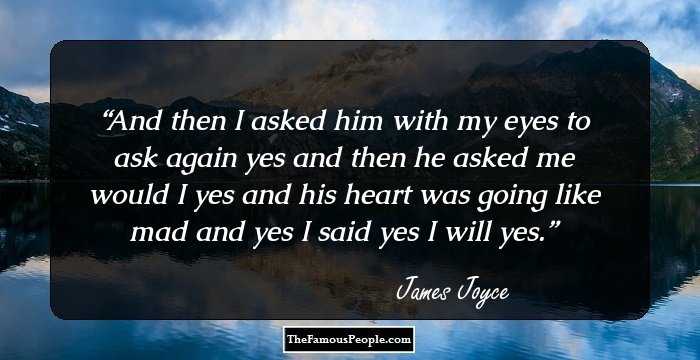
A young James Joyce was sent away to the renowned Clongowes School in 1888?a Jesuit institution that was regarded as the best preparatory school in Ireland. James' father, John Joyce, was a fierce Irish Catholic patriot and his political and religious influences are most evident in Joyce's two key works A Portrait of the Artist as a Young Man and Ulysses.Īs a result of their steadily diminishing wealth and income, the Joyce family was repeatedly forced to move to more modest residences and John Joyce's habitual unemployment as well as his drinking and spending habits, made it difficult for the Joyces to retain their previous social standing. The Joyce family was initially well off as Dublin merchants with bloodlines that connected them to old Irish nobility in the country. In April 2013 the Central Bank of Ireland issued a silver €10 commemorative coin in honour of Joyce.James Augustine Aloysius Joyce was born on February 2, 1882, just south of Dublin in a wealthy suburb called Rathgar. The work and life of Joyce is celebrated annually as Bloomsday on 16 June, in Dublin and in several other cities worldwide. In 1998, the US publisher of Joyce’s works ranked Ulysses number 1, A Portrait of the Artist as a Young Man number 3, and Finnegans Wake number 77, on its list of the 100 best English-language novels of the twentieth century. In 1999 Time magazine named Joyce one of the hundred most important people of the twentieth century. That is the particular thing that changed the landscape of fiction and created some of the famous names of twentieth century fiction: such writers as different as Samuel Becket, Jorge Luis Borges, Salman Rushdie, Thomas Pynchon, Flann O’Brien, William Burroughs and Robert Anton Wilson. Modernism led to a change in emphasis from focus on character and plot to the elements of the language itself. The nineteenth century novel was dominated by the English Romantics and the French and Russian realists, but with the emergence of modernism in the twentieth century writers began to pay more attention to language. Ulysses and Finnegans Wake changed the literary landscape. There are tributes to James Joyce with references to his works in music clubs across America.

One can hear the New Orleans-style jazz band, Ulysses, on Saturday nights at the James Joyce pub in Santa Barbara, California. In Garrison Keillor’s A Prairie Home Companion there is an episode in its “Lives of the Cowboys” spoof where Martin Sheen plays James Joyce in a gunfight with Clint Eastwood. It is more than just writers, it is culture generally that Joyce’s influence can be felt. A huge number of them invoke, the shape and central characters of Joyce’s masterpiece. These novels are both popular and critically substantive. We see several examples of recent American novels that allude to Ulysses while employing traditional narrative storytelling techniques and well-defined characters. Joyce’s influence on other writers, particularly Americans, is incalculable. Samuel Becket said about it: ‘His writing is not about something. His first novel, A Portrait of the Artist as a Young Man (1916) marks a new era in British fiction, and Finnegans Wake is legendary for its complexity and depth. Joyce’s collection of short stories, Dubliners, is regarded as one of the best collection of stories of the century. Ulysses is a seminal work in which Homer’s Odyssey is paralleled in a range of episodes and literary styles.

He is regarded as one of the most influential and important writers of the 20th century. James Joyce was an Irish novelist, best known for his novel, Ulysses, and his later novel, Finnegans Wake. Each Shakespeare’s play name links to a range of resources about each play: Character summaries, plot outlines, example essays and famous quotes, soliloquies and monologues: All’s Well That Ends Well Antony and Cleopatra As You Like It The Comedy of Errors Coriolanus Cymbeline Hamlet Henry IV Part 1 Henry IV Part 2 Henry VIII Henry VI Part 1 Henry VI Part 2 Henry VI Part 3 Henry V Julius Caesar King John King Lear Loves Labour’s Lost Macbeth Measure for Measure The Merchant of Venice The Merry Wives of Windsor A Midsummer Night’s Dream Much Ado About Nothing Othello Pericles Richard II Richard III Romeo & Juliet The Taming of the Shrew The Tempest Timon of Athens Titus Andronicus Troilus & Cressida Twelfth Night The Two Gentlemen of Verona The Winter’s Tale This list of Shakespeare plays brings together all 38 plays in alphabetical order.



 0 kommentar(er)
0 kommentar(er)
